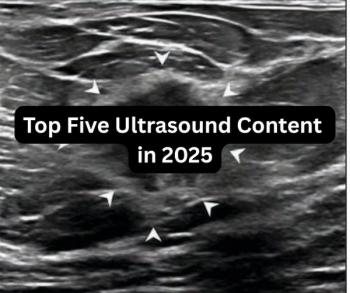
TMG survey finds growth slowing in U.S. PACS market
TMG survey finds growth slowing in U.S. PACS marketFalling component prices result in slower revenue growthCompanies may be revising their projections of the future growth of the U.S. PACS market after the release of new data indicating
TMG survey finds growth slowing in U.S. PACS market
Falling component prices result in slower revenue growth
Companies may be revising their projections of the future growth of the U.S. PACS market after the release of new data indicating that the technology's revenue growth is slower than expected. Once estimated by many to reach the $1 billion mark by 2000, PACS purchases will generate only $450 million in annual sales in the U.S. by the turn of the century, according to a survey by Technology Marketing Group of Des Plaines, IL.
TMG estimates that the PACS market generated about $400 million in annual revenues in 1997 (military and VA PACS purchases were not included in the estimate). While many industry analysts had tabbed market growth at 15% to 20% a year, TMG believes that percentage increases will be 5% to 10% for the next five years. In contrast to previous TMG studies that extrapolated market projections from small survey samples, this TMG survey was based on a census of nearly 90% of 200-bed hospitals and major imaging centers (PNN 11/97).
The consulting firm attributes the slackening growth to drastic declines in the price of PACS components, as well as overly optimistic estimates of PACS purchasing by prospective customers in previous surveys. While PACS purchasing has increased in the last several years, a 50% drop in component pricing over the last five years led to the dip in dollar terms, according to the company.
One interesting trend to come out of the survey was the increased use of PACS technology to transmit images outside of the radiology department. While PACS has traditionally been conceptualized as a way of making radiology more efficient, imaging departments now see PACS technology as a means of quickly communicating radiology information to their customers such as ICU/CCU units or referring physicians, said Mitchell Goldburgh, a senior associate with TMG.
Additionally, TMG projects that around 30% of purchases of PACS components in 1998 will be bundled as part of a modality purchase. This development would allow room for non-modality PACS players to compete in the market.
In addition to overall market projections, the survey includes data on market usage of workstations and viewing terminals; archiving devices; x-ray film scanners; computed radiography; laser printers/imagers; networking applications; radiology information systems; and digital voice dictation/speech recognition systems. TMG included sales data from all these segments in deriving its $400 million figure for the size of the overall PACS market.
TMG sees strong growth ahead for CR, workstations, RIS products, and digital archiving. Film digitizers and digital dictation systems will have flat revenue growth, while film printers are projected to decrease in total dollar sales, according to TMG.
Newsletter
Stay at the forefront of radiology with the Diagnostic Imaging newsletter, delivering the latest news, clinical insights, and imaging advancements for today’s radiologists.




























